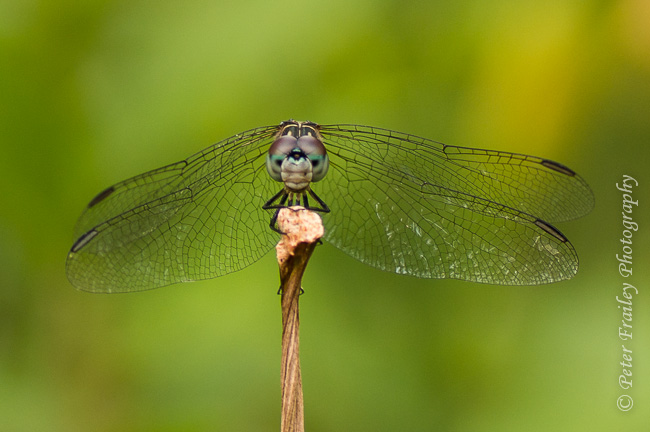I am a big fan of blue. In the 1950's I fell in love with my Dad's Kodachromes. Most of the ones I remember where taken in the American West as we drove through the National Parks on our way to his new job on the West Coast. I remember nothing but sunny days. Ever since viewing his slides from Yellowstone, Bryce, Death Valley and Yosemite, I have loved deep blue sky and puffy clouds. He never did use Velvia, but when using Kodachrome he taught me to under expose by about 1/3 (or was it 2/3) stop to bring out the richness of the sky. Of course, the rest of the slide looked underexposed, but I don't think I really noticed. Today, with digital, I am more likely to ignore his advise and to "expose to the right".
I am very picky about the color blue. If you swing blue one way you get a magenta cast. If you swing it the other way, it gets a bit green. I don't like either.
On this day, I was thrilled with the results I got from the NEX. For the images in this post, I used the NEX5r with the 16-50 kit lens. I used no filters. I own the NEX6 also, but as far as I can tell the results are identical. I used the Lightroom landscape sharpening preset for each of them, and the first image (the only vertical image) has a +.4 EV lightroom exposure adjustment. I used the default color profile (Adobe Standard). Some of the images have been cropped. On several I used the shadows slider to brighten up the dark areas. Other than that I did nothing in post processing.

There's nothing great about any of these images. They were all taken yesterday along the highway while doing a day trip to Vermont to see our brand spanking new grandson. The weather here in New England has been terrible in my view. We are in a heat wave and the humidity is torturous. So spending the day in an air-conditioned car and an air-conditioned hospital was a good coping strategy. Obviously I had a camera with me for the baby, but I just couldn't help taking a "sky shot" whenever we stopped.
I am looking forward (not today) to comparing these results with what I get from my Olympus E-M5. I know there is an entire cult of Olympus jpeg fans who say the Olympus blue is unique and spectacular. However, I shoot RAW, and as far as I know Olympus has never shared its color profile with Adobe. So, I am left with what I can do in Lightroom and Photoshop. I have created my own color profile using ColorChecker Passport, but it is almost identical to Adobe Standard.
By the way, like many, I have found viewing online photos with Internet Explorer yields poor results. On my monitor (which is calibrated), Internet Explorer makes the sky too green. It is too saturated. Others have said that this phenomenon occurs only when the viewer has a high gamut monitor (which I do.) But regardless, I find that Chrome gives results that are color-accurate.
So... BEST VIEWED IN CHROME AND NOT IN INTERNET EXPLORER
As the saying goes, "your mileage may vary". But to me, this is what blue should look like. No green tint. No magenta tint.






























